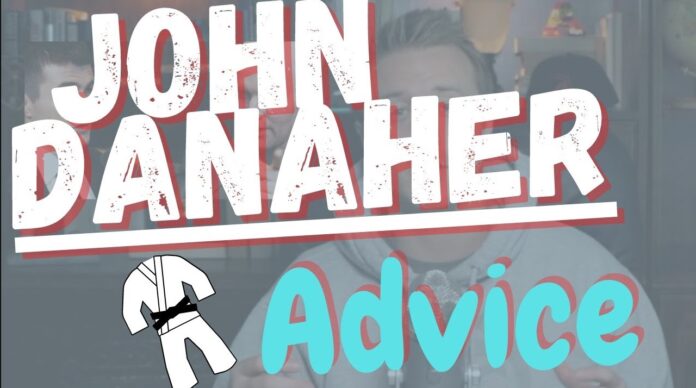
According to John Danaher, who arguably knows more about effective Jiu-Jitsu training than anyone else on the planet, if BJJ non-competitors want to see progress in training they should set up their schedule in a very specific way.
The John Danaher Training Formula For BJJ Non-Competitors
Most people in Brazilian Jiu-Jitsu do not train with a view of doing Jiu-Jitsu professionally. The most common training frequency for BJJ non-competitors is 1-2 days a week. Training so little means either very slow progress or applying a very specific way of training in order to ensure you get better soon and keep getting better.
Danaher outlines efficiency, ownership, assessment, solving weaknesses in your game, picking a mentor, applying the plan in practice, and self-discovery as the key areas that will define your success as a BJJ non-competitor.
Efficiency
The key aspect of making the most out of your training as a BJJ non-competitors, according to John Danaher, is maximum efficiency in the small amount of time you spend on the mats.
Competitors, whether amateur or professional, tend to train almost every week, with the pros doing 2-3 sessions a day. That is out of the reach of BJJ non-competitors but doesn’t mean that progress is out of reach or has to be slow.
Danaher advises focusing on specific things in your training every time you’re on the mats, rather than just popping in to see what’s going on that day, and rolling around just for the sake of it.
Zero planning when you’re going to BJJ training is bad planning, and it will take you much longer if you’re throwing spaghetti at the wall to figure out what works for you, as opposed to you coming up with clearly defined goals for each training session.
Ownership
The less time you spend on the mat, the more responsible you need to be with your training.
BJJ non-competitors usually train a couple of times a week, Danaher advocates that you won’t progress if you only come to follow what is served in class. Come in with questions, ask the instructors to explain different concepts, techniques, and approaches in-depth, and do your own research on and off the mats.
Once again it comes to walking on the mats with a fully formed plan in your head.
Assessment
One of the things that people find really difficult is to do an honest assessment of their abilities on the mats. Without it, you won’t know what to focus on, and what needs improving.
This is where Danaher recommends video training – record yourself rolling, and analyze the recording afterward. You tend to have a much clearer image of what you need to fix when you’re looking at yourself from the outside, especially for BJJ non-competitors since there’s no competition footage of you to watch.
Weed Out Weaknesses
The one thing to focus on from the video footage of you rolling is to make sure you identify your weaknesses. The goal is to identify four or five major weaknesses in your game and devise a plan to correct them in the shortest amount of time possible, by employing efficiency and ownership
The best way to progress in BJJ is not to work on things you are good at, but rather on those you are not good at (the “suck system). This is where the major focus of your plan and your research should be.
Pick A Model/Mentor
You most likely already have someone in the BJJ world that you’re trying to emulate. Once you figure out your weaknesses, and with that, your research subject, look for those that are best at it.
BJJ non-competitors should look at both professional grapplers who are experts in a field or technique, or just people in your home gym that are proficient at whatever is your weakness.
Then focus on emulating what they’re doing to make the move work for them: body positioning, entires, trick and baits, setups, and scrambles. Watch their rolls, and if it is someone in your gym, ask questions.
Work The Plan
Probably the most crucial step in eh entire process is to apply what you’ve planned, a.k.a. work the plan.
Enacting your training plan on the mats is what will get you progress. No matter how much you plan, record and ask people, if you’re not trying to apply it on the mats, you’re wasting your time. As a BJJ non-competitor, training scarcely, you have no time to waste if you want to improve.
Self Discovery
The final point John Danaher stresses is that you need to use your time on the mats for discovery. Not just discovering BJJ problems and solutions, but also self-discovery.
It goes beyond simply looking for weaknesses to improve, but rather figuring out what your JIu-Jitsu is all about, and how to improve on your own. Your instructor is there to help you, not guide you holding your hand.









































